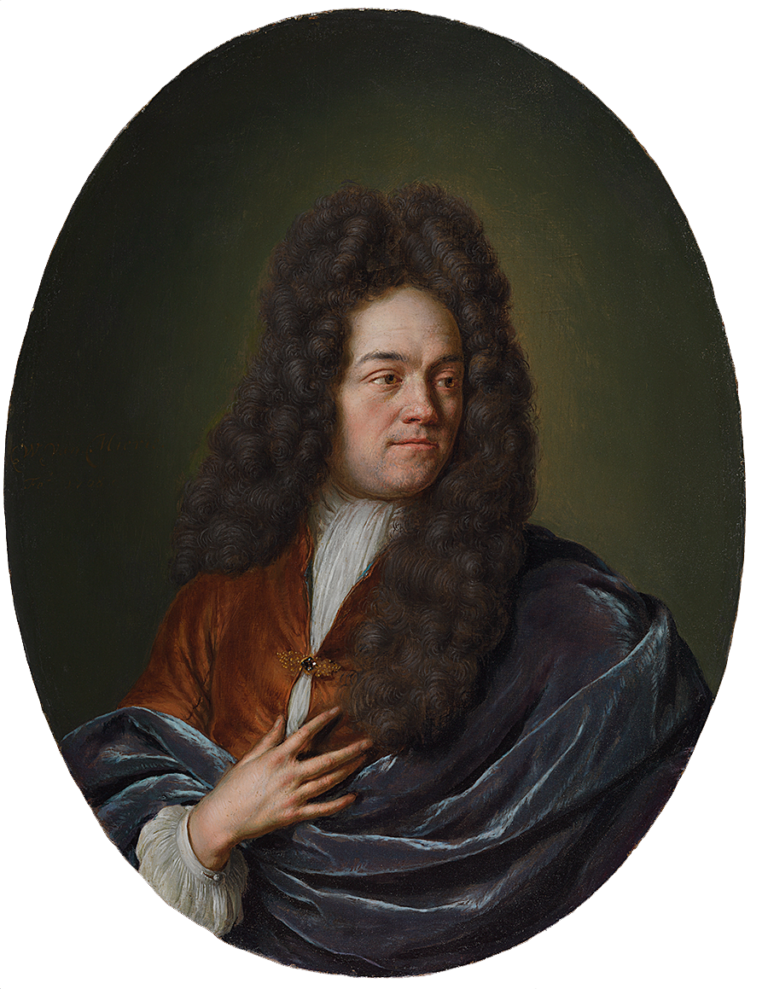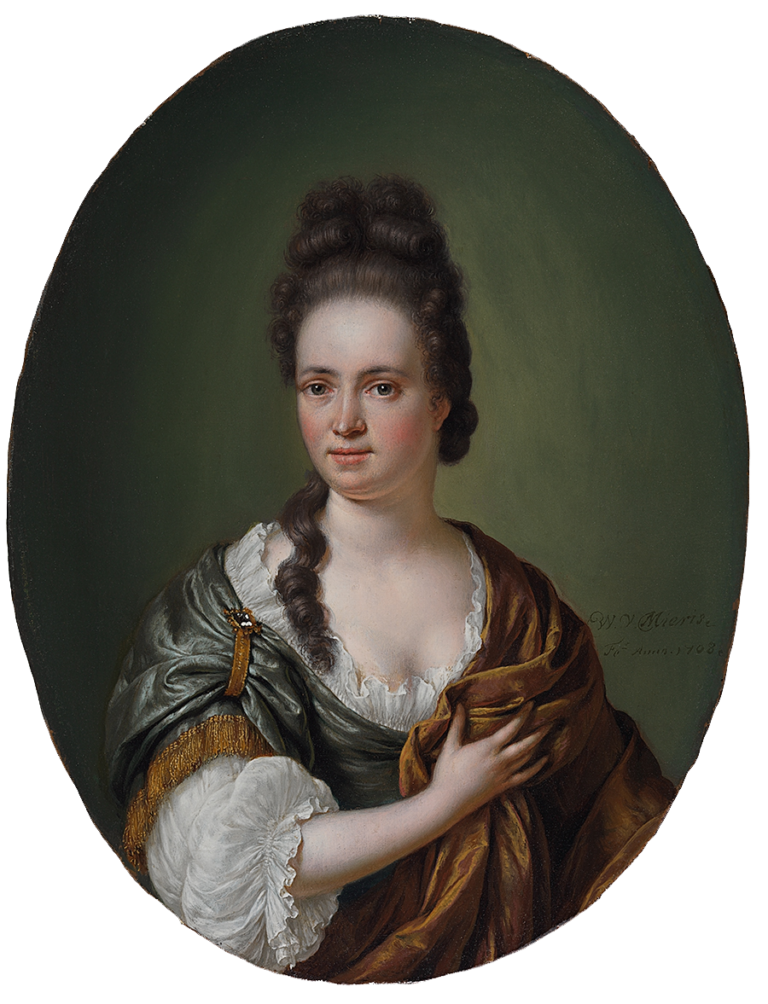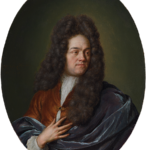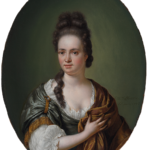The couple in these two oval portraits represents the height of fashion in the early eighteenth century, both elegant and refined. The man wears a stylish long wig, a white blouse and a brown jacket with a golden buckle, and he has gracefully draped a gray velvet mantle around his body. Holding his right hand before his chest, he looks affectionately toward his wife. She responds to her husband’s gaze by turning her head slightly in his direction, though she looks directly at the viewer. She wears a white blouse and a green satin dress adorned with a golden fringe and jewelry, and she gently holds a golden-brown shawl to cover her left shoulder. Her dark brown hair is elegantly coiffured, with a long, flowing lock falling over her right shoulder onto her décolleté, a style of dress derived from French fashions that had transformed the wardrobes of wealthy citizens in the Dutch Republic by the early eighteenth century.
Although the identity of the couple remains unknown, the pair clearly belonged to the affluent elite who were able to commission portraits from Willem van Mieris, an artist who had already established an outstanding reputation for himself.1 Van Mieris had excelled in portrait painting from the earliest years of his career, representing stolid Dutch burghers in their domestic environments, as in his pendant portraits purported to represent Samuel van Acker and his wife (WM-106.a–b), but over time his style evolved to a more flowing manner to reflect the changing social and cultural character of the Netherlands. In the small bust-length pendant portraits discussed here, Van Mieris depicted his sitters in an oval format, thereby focusing his entire attention on the figures and their elegant appearance. His refined painterly technique is particularly evident in the minute rendering of textures, such as the soft curled hair, the pleats of the thin white blouse, the beautifully draped shawls, and the golden jewelry with precious stones. The sitters’ elegant poses and gestures, characteristic of this master at this period of his career, reflect the period’s dominant classicizing style.
This type of portrait pair usually hung together with images of relatives and ancestors, as was the case with two oval portraits that Van Mieris made for his patron Allard de la Court and his wife, Catharina Backer. Those pendants hung together with 26 other family portraits in the dining room of the couple’s home.2 Such portraits were sometimes inherited by descendants and remained within the family, but many were dispersed over the centuries and can no longer be identified with known sitters, a fate also shared by the present works.
Provenance research has recently clarified the complete history of their ownership since the nineteenth century. The red wax seals affixed to the back of both panels, which contain a monogram consisting of the letters C, V, and L (fig 1), have been identified with the collector Christophe van Loo from Ghent. He purchased both portraits at the auction of the collection of Count Philippe Vilain XIIII of Brussels, held in Paris in 1857, and they were later sold at the Van Loo sale in Paris in 1881.3 Remarkably, the auction catalogues of 1857 and 1881 describe the couple as Willem van Mieris and his wife. This identification, however, is far from convincing. The couple hardly looks old enough to be 46 and 45 years old, respectively, the ages of the artist and his wife in 1708, the year these portraits were painted.4



